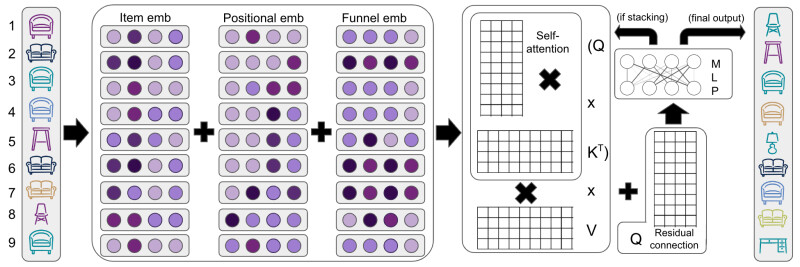More than 30 million customers shop on Wayfair to purchase products from a catalog of over 8 million items. Providing personalized and relevant recommendations is vital to keep customers engaged and drive purchases.
At the 2022 ACM Conference on Recommender Systems ( RecSys), my colleagues and I will present Wayfair’s Multi-headed Attention Recommender System ( MARS) that utilizes a new approach to recommend relevant products to customers at every stage of their shopping journey.
This is not a new problem, and scientists have experimented with a variety of approaches to deliver personalized recommendations to customers.
For example, matrix factorization methods use customer browsing histories to determine correlations between products and customers. These correlations are then used to recommend products that are similar to a customer’s browsing history. There is one obvious drawback to this approach – matrix factorization methods don’t consider how recently an item was viewed. This is a critical miss, as people’s shopping preferences change over time.
Scientists have experimented with adding sequential awareness to factor recency in customer browsing behavior. Markov Chains and Recurrent Neural Networks can both learn temporal dependencies. However, they have challenges when it comes to long-term memory, and are not easily parallelizable. More recently, transformers, which can pay attention to specific areas of the input and understand context, have revolutionized our ability to understand sequential information over a longer period of time.
MARS uses a sequential list of viewed items to provide product recommendations that better match the evolving preferences of customers over time. To do this, the model learns item embeddings to encode relevant item attributes. In addition, it learns positional embeddings to account for the order in which a customer viewed items (Figure 1).

To further improve the performance of our model, we explored other additive embeddings for funnel stages (i.e. whether the interaction is a pageview, add to cart or order). Furthermore, we added better resurfacing awareness, as many customers prefer ordering previously-viewed items.
We find that MARS is able to implicitly learn product attributes like price, popularity, style and functionality (Figure 2). This effectively means that these features can be directly learned from the model and need not be passed in as inputs, greatly simplifying both training and inference.

We also find that we can generalize the model to encompass multiple types of furniture. This allows us to make cross-category recommendations such as being able to recommend coffee tables based on a customer that has viewed sofas, because we have forced all items to share the same attribute space (Fig. 3). This means that both physical attributes like materials used, as well as abstract attributes like style and functionality can be learned at the same time, and MARS can also learn to weigh the relative importance of these attributes by itself.

At Wayfair, we are committed to helping customers discover products that help them create their own unique sense of home. By learning what attributes are most important to the customer, we are able to recommend items even for furniture types that the customer may have never browsed before, and bring our mission to life.

